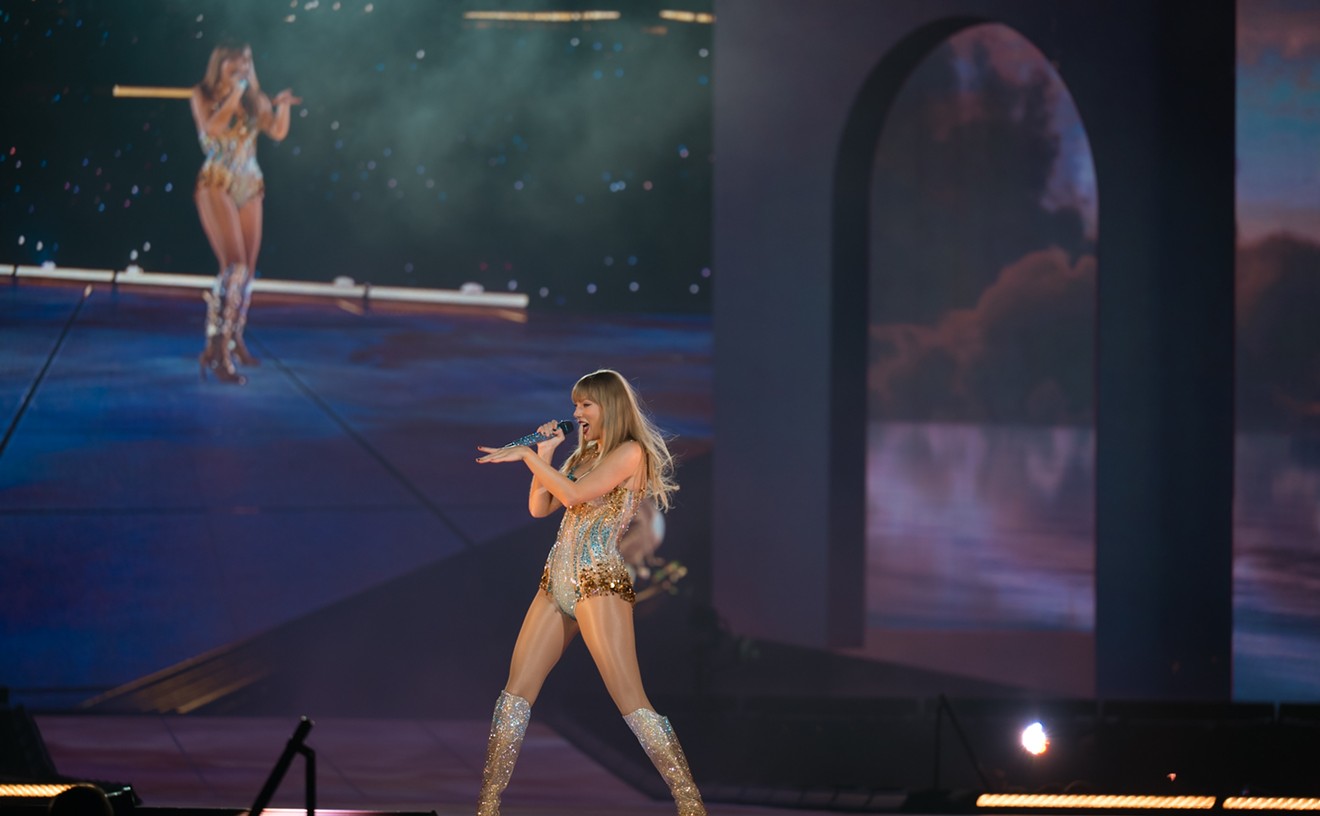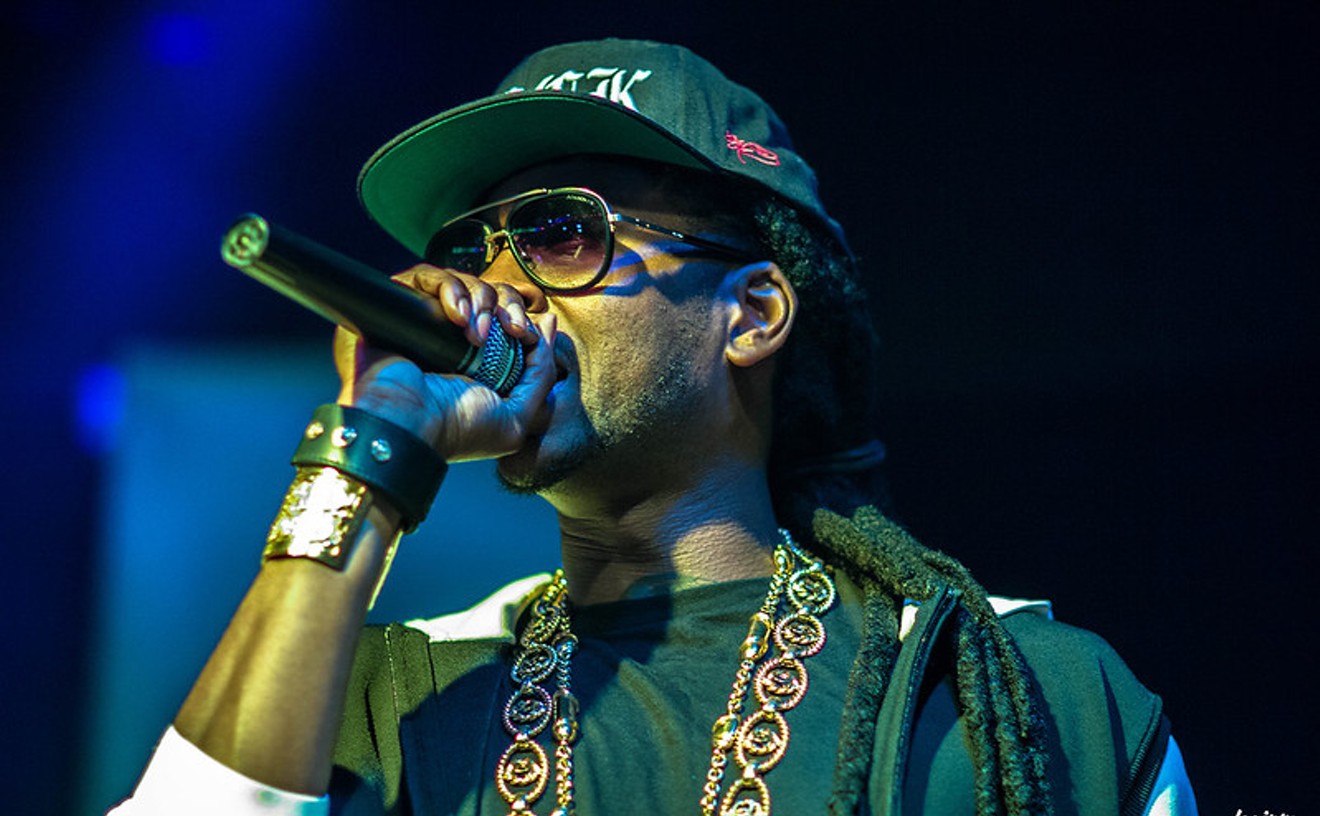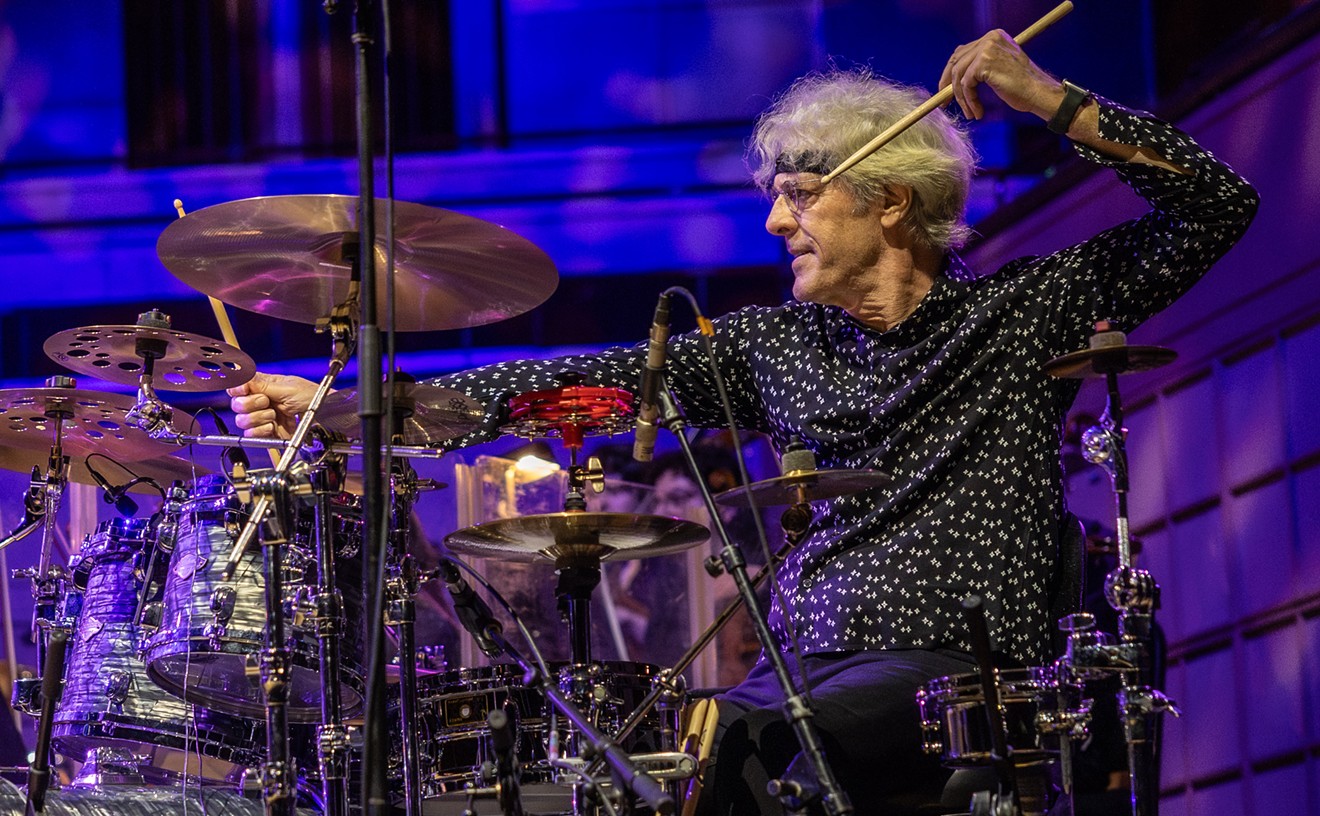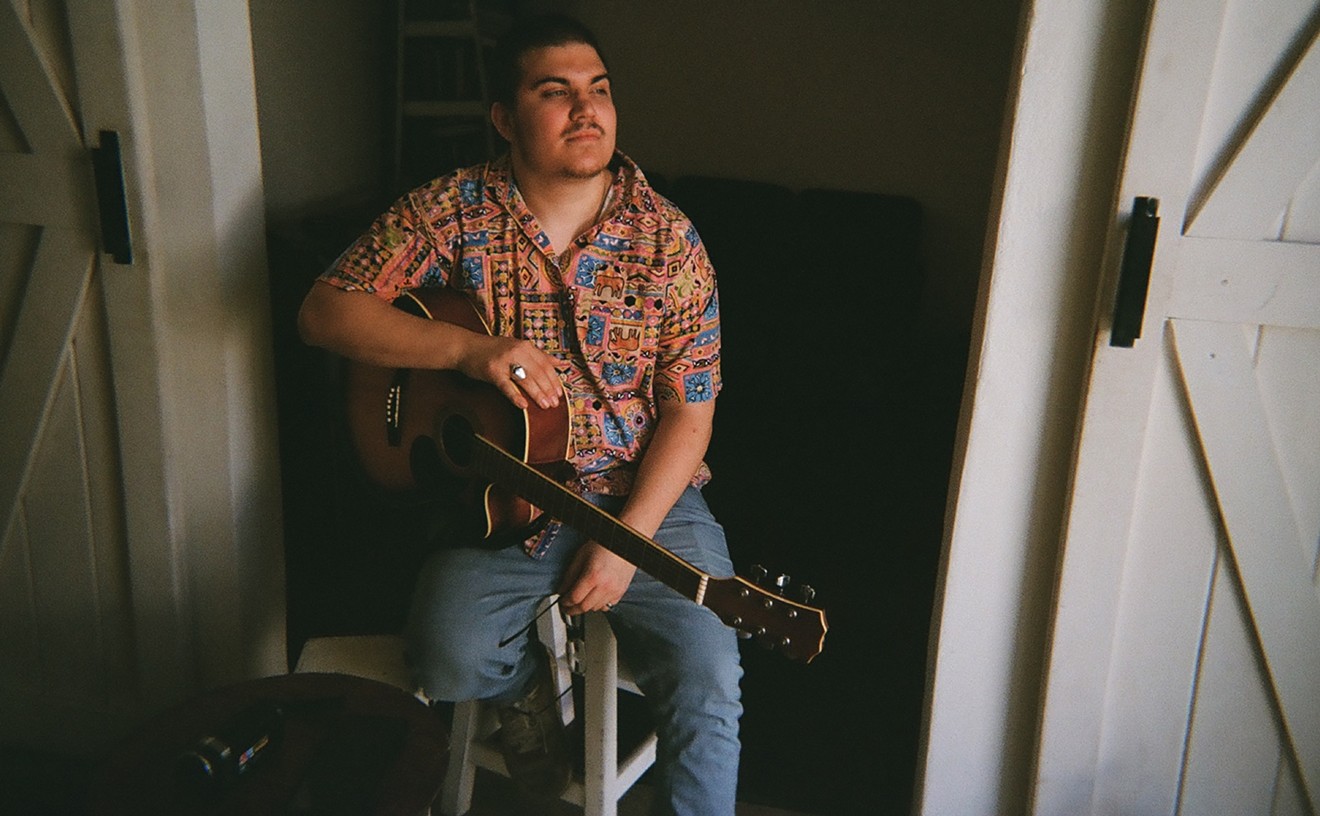While checking out Houston's art-heavy electronic music festival, Day for Night, a couple weekends ago, we had the chance to ask local music photographer Adrian Samano about his past gigs and the Houston rappers he grew up listening to.
How did you get started in concert photography?
I knew this guy named Matt Battaglia, who runs Oaktopia Music Festival. I met him while I was doing an interview on a restaurant that was closing down in Denton, then I decided to call him one day. I asked if he needed a photographer for his upcoming shows that he had. It was Riff Raff and Lil Debbie; they booked those guys at Rockin Rodeo in Denton. And he agreed, he let me come out. I photographed a couple more shows for him, then I asked if I could be a part of Oaktopia and he agreed to that as well.
Besides music photography, what else do you shoot?
As far as photos, it varies on mood. I really try to do more abstract things or emotional pieces with art contrast. I really like colorful photos, but with a dark mood. It’s an interesting mix. I even try to bring that into my concert photos.
How do local venues differentiate from music festivals and arena shows?
In local venues, you can pretty much go wherever and do whatever. I can totally just go on stage while the band is playing. Most of the time it’s fine. As to where in arenas or even at music festivals, you have to deal with security — people hassling you all the time. At times, there can be confusion with the security, but I always try to be nice. Take care of security and security takes care of you. I prefer smaller shows and smaller venues, because you can feel more of the energy. When you can feel that energy, you can see that through your photos.
What's one of your most memorable gigs?
One of my favorites ones that I did was Death Grips at Day for Night last year. I got caught up too much in the music to actually photograph, but I did my job. I was just so hyped. That’s probably one of the most hyped shows that I’ve ever been to, job wise and even as an attendee. One of the most excruciating and memorable ones was photographing Drake at The FADER FORT [at SXSW]. I stood in front of the barrier for eight hours, I had nothing to drink or eat and I had my gear on which was another 40 pounds. I waited since four o’clock and he didn’t end up coming out until 11:30 or midnight. After that I found a random bench in Austin, I took my off my boots, my gear, and I just laid down for at least 10 minutes.
How do you feel about the rule that sometimes limits music photographers to shooting an artist's first three songs?
I think it’s more motivation for me. I try to get as many good shots in less than three songs [as I can]. Some artists only allow two songs or you only get 15 minutes. I think the three-song rule is a great thing. It gets really frustrating as an attendee to have 30 to 40 photographers in front of you while you’re trying to enjoy the show. It used to annoy me when I went to shows, so I get it. I try to stay out of the way and stay more on the side of the stage.
What's your must-have gear?
I always take film cameras. I take an instant film, and either a 35mm or 120mm film camera. This year I brought all of them — digital, film and instant film. As far as lenses go, I usually stick to a 24mm, because I like things wide open. And I use a 60mm lens.
Do you have a favorite photo that you've taken?
It's an instant film photo — it was at last year’s Day for Night. I ran into Bun B, and I’ve been listening to Bun B since I was a kid. This was the first time I ever saw him in person, so I was super nervous and I’ve never been so star struck. I go over, super nervous and shaking, and I ask him if I can take his photograph. I take an instant shot of him, I ask him for his autograph and he signs it. I realize that I was so nervous that I left the lens cap on, so the photograph is just blank. I dropped the photo and I fell down, I was so mad at myself. My girlfriend was telling me, "Go ask if you can do it again." I was like, “There’s no way I can do that, I am going to look like an idiot.” I finally went over there and asked to do it again. He was super nice and agreed to do it again. Now it’s on my wall in my studio. It’s a special thing to have an artist that I listened to for as long as I can remember, and to have the only shot like that.
Do you have any advice for beginning photographers?
Don’t worry about your gear. That’s always a thing that I notice a lot. Work with what you've got, and make it work. I see a lot of photographers in the photo pit looking others up and down — looking at their gear. I don’t think any of that really matters. It's cool and all to have a $2,000 lens and a $4,000 body, but at the end of the day your photos can still be bad. Don’t let any of that get you down. Just work with what you've got until you can get better equipment. Create the art for yourself.
You can find Adrian’s work on his website, or follow him on Instagram to keep up with his work.
[
{
"name": "Air - MediumRectangle - Inline Content - Mobile Display Size",
"component": "18855504",
"insertPoint": "2",
"requiredCountToDisplay": "2"
},{
"name": "Editor Picks",
"component": "17105533",
"insertPoint": "4",
"requiredCountToDisplay": "1"
},{
"name": "Inline Links",
"component": "18349797",
"insertPoint": "8th",
"startingPoint": 8,
"requiredCountToDisplay": "7",
"maxInsertions": 25
},{
"name": "Air - MediumRectangle - Combo - Inline Content",
"component": "17105532",
"insertPoint": "8th",
"startingPoint": 8,
"requiredCountToDisplay": "7",
"maxInsertions": 25
},{
"name": "Inline Links",
"component": "18349797",
"insertPoint": "8th",
"startingPoint": 12,
"requiredCountToDisplay": "11",
"maxInsertions": 25
},{
"name": "Air - Leaderboard Tower - Combo - Inline Content",
"component": "17105535",
"insertPoint": "8th",
"startingPoint": 12,
"requiredCountToDisplay": "11",
"maxInsertions": 25
}
]










